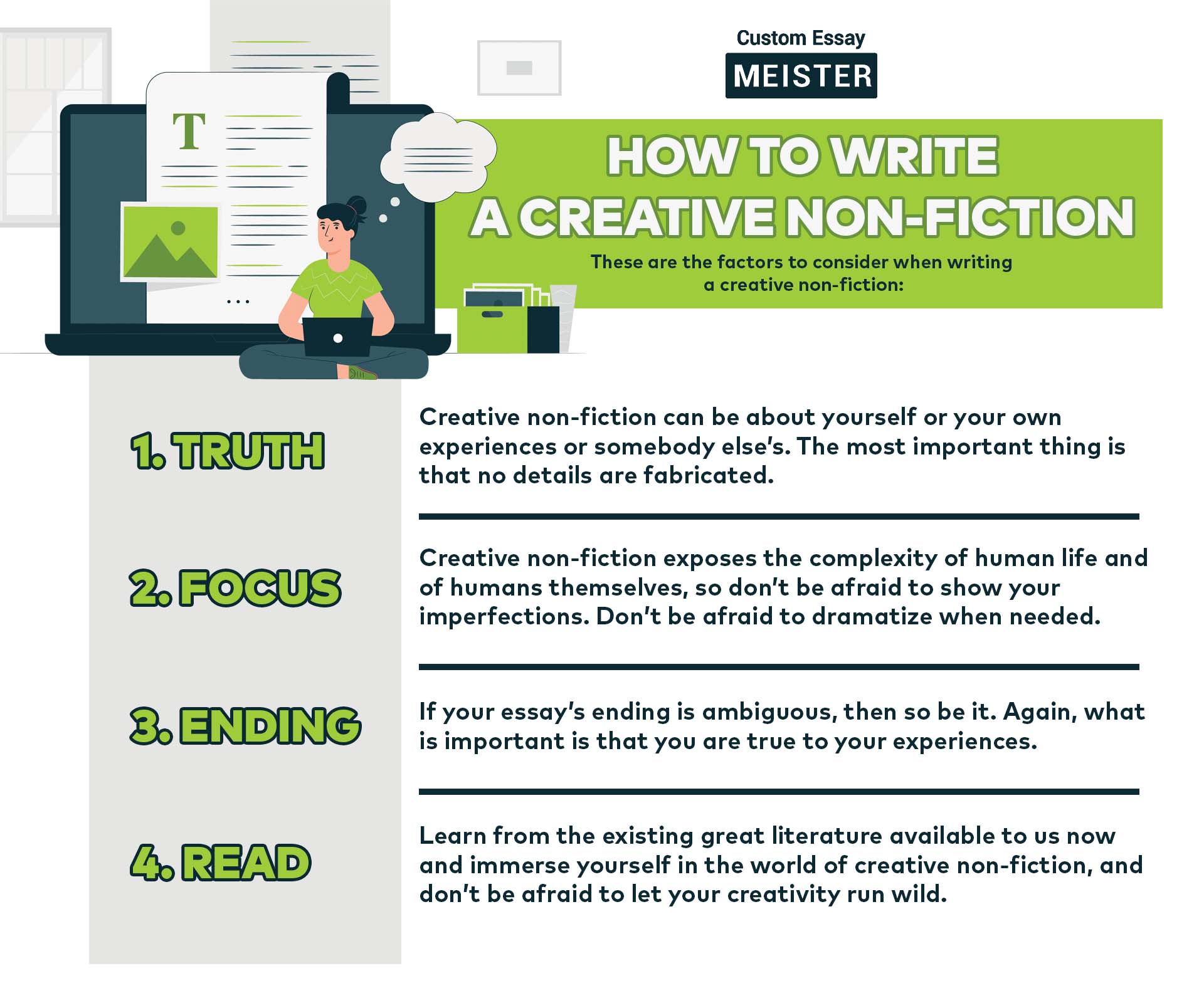How to Write Creative Non-Fiction
Creative non-fiction is a literary genre that makes use of elements of different genres. The most prominent element is the narrative from fiction, but since it’s creative, many writers play on the form, as poets often do. Creative non-fiction writes about true events and people in order to explore a deeper truth. To quote Annie Dillard in To Fashion A Text:
"Literary non-fiction is all over the map and has been for three hundred years. There's nothing you can't do with it. No subject matter is forbidden, no structure is proscribed. You get to make up your own form every time."
It’s easy to learn how to write creative non-fiction essay , but there are factors that one has to take into consideration. Let’s discuss them one by one.
Truth
Creative non-fiction can be about yourself or your own experiences or somebody else’s. The most important thing is that no details are fabricated. Of course, memory is not always accurate, so it’s important to cross-check your facts, do some research, or be honest about things that you’re not sure about. If you intend to write about an event, take notes or keep a journal to help you remember. Creative non-fiction aims to reveal the truth, so as a writer you should also be as close to the truth as possible. By truth, I mean emotional truth, not all the details of the moment.
Focus
While a creative non-fiction essay tells a story, all the best ones rarely focus only on the narrative (unlike fiction ). This can be a character, and character growth, an idea, or a dilemma such as an ethical dilemma. Creative non-fiction exposes the complexity of human life and of humans themselves, so don’t be afraid to show your imperfections. Don’t be afraid to dramatize when needed. When writing about something that is true and meaningful, it’s easy to get overwhelmed with the details. All of them seem indispensable, but believe me, some of them are not. Writing involves the meticulous picking of which details to include, and which to exclude. A tip is to choose only the details that will help you achieve your purpose. For instance, you can skip details about the clothes you’re wearing on that eventful day unless this detail causes some reaction or realization that is central to your point. This will also keep you from getting side-tracked from your intended direction.
Ending
Writing an essay about yourself can sometimes feel like an exercise in conceit, which would force you to come up with a grand lesson or moral to impart. But such an ending is not always necessary neither is ending your creative non-fiction with a resolution. Unless these are the natural direction of your story, don’t force it. There is no one way of how to write creative non-fiction, so there is also no one way to end it. If your essay’s ending is ambiguous, then so be it. Again, what is important is that you are true to your experiences.
Read
You don’t need a splash of genius to learn how to write a creative non-fiction essay. Oftentimes, what we as readers find to be innovative writing is the product of careful practice and thought that new writers learn or observe from their predecessors or contemporaries. Learn from the existing great literature available to us now and immerse yourself in the world of creative non-fiction, and don’t be afraid to let your creativity run wild. Remember: even great writers need help sometimes.
